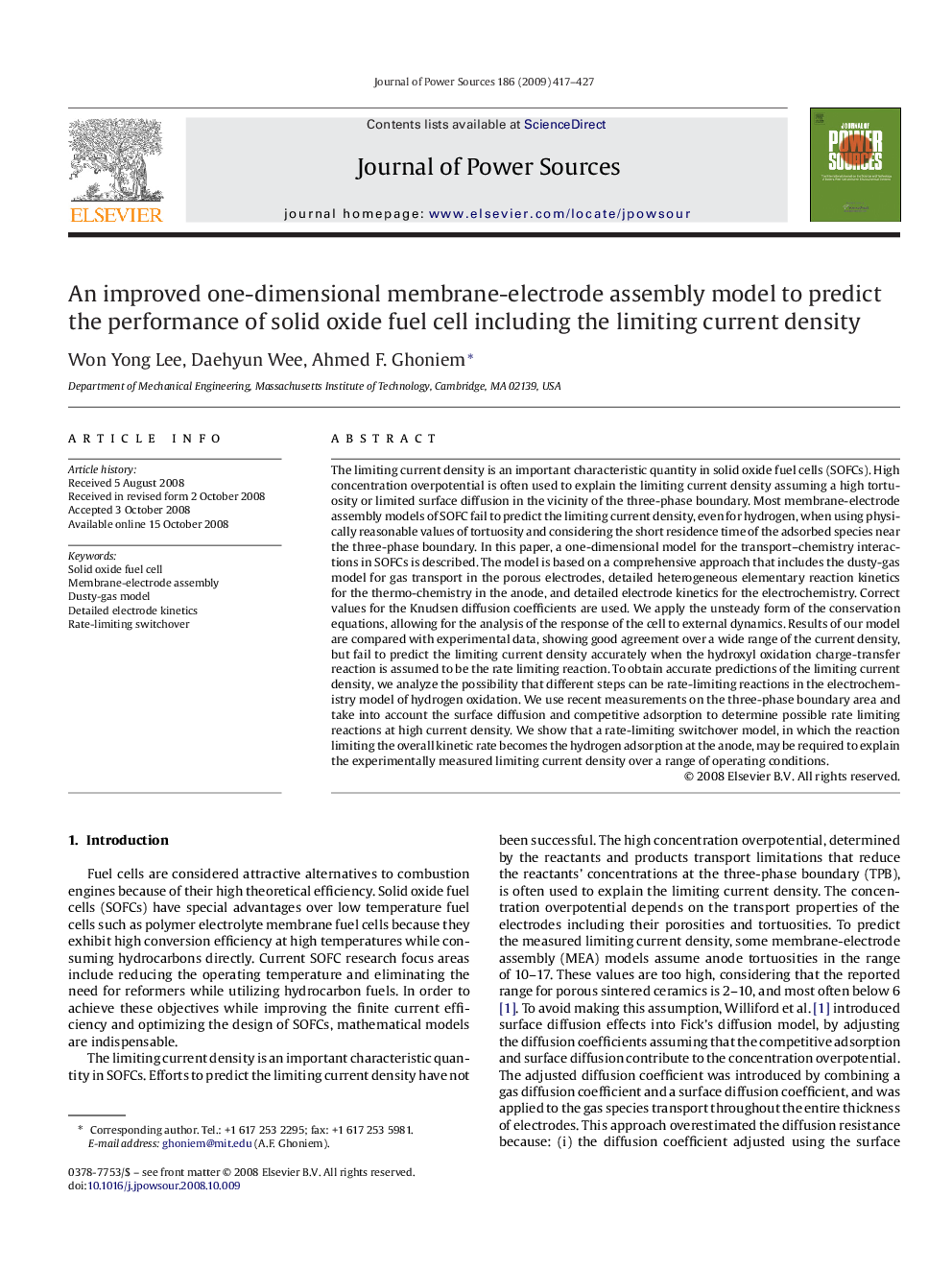| کد مقاله | کد نشریه | سال انتشار | مقاله انگلیسی | نسخه تمام متن |
|---|---|---|---|---|
| 1291329 | 973353 | 2009 | 11 صفحه PDF | دانلود رایگان |

The limiting current density is an important characteristic quantity in solid oxide fuel cells (SOFCs). High concentration overpotential is often used to explain the limiting current density assuming a high tortuosity or limited surface diffusion in the vicinity of the three-phase boundary. Most membrane-electrode assembly models of SOFC fail to predict the limiting current density, even for hydrogen, when using physically reasonable values of tortuosity and considering the short residence time of the adsorbed species near the three-phase boundary. In this paper, a one-dimensional model for the transport–chemistry interactions in SOFCs is described. The model is based on a comprehensive approach that includes the dusty-gas model for gas transport in the porous electrodes, detailed heterogeneous elementary reaction kinetics for the thermo-chemistry in the anode, and detailed electrode kinetics for the electrochemistry. Correct values for the Knudsen diffusion coefficients are used. We apply the unsteady form of the conservation equations, allowing for the analysis of the response of the cell to external dynamics. Results of our model are compared with experimental data, showing good agreement over a wide range of the current density, but fail to predict the limiting current density accurately when the hydroxyl oxidation charge-transfer reaction is assumed to be the rate limiting reaction. To obtain accurate predictions of the limiting current density, we analyze the possibility that different steps can be rate-limiting reactions in the electrochemistry model of hydrogen oxidation. We use recent measurements on the three-phase boundary area and take into account the surface diffusion and competitive adsorption to determine possible rate limiting reactions at high current density. We show that a rate-limiting switchover model, in which the reaction limiting the overall kinetic rate becomes the hydrogen adsorption at the anode, may be required to explain the experimentally measured limiting current density over a range of operating conditions.
Journal: Journal of Power Sources - Volume 186, Issue 2, 15 January 2009, Pages 417–427